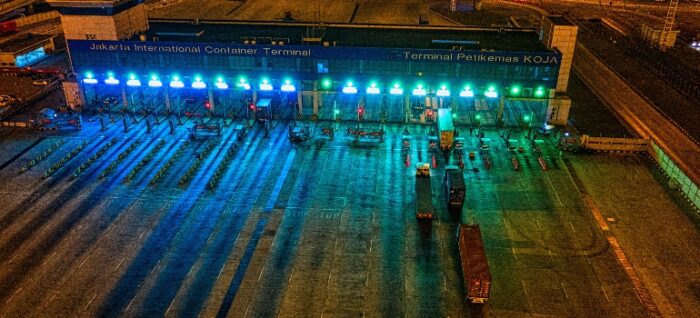What is the Most Efficient Way to Ship Cargo?
Get a QuoteThere are many different methods for shipping cargo. But what is the most reliable one? It is hard to say, as different people have different needs. Also, no cargo is the same, so each one requires special attention and planning. Whether by sea, air, rail or road, there are numerous modes of transportation to consider. Let us show you the most efficient way to ship cargo, and how Interstate Logistics can be helpful in the process.
Maritime Shipping
Maritime shipping is highly efficient for transporting large volumes of cargo over long distances. Container ships, bulk carriers, and Ro-Ro ships are key players in this mode of transport. Container ships, are the workhorses of international trade, capable of carrying thousands of containers filled with diverse goods. This method is cost-effective, especially for heavy or bulky items, because ships have a massive carrying capacity and fuel consumption per ton-mile is low compared to other modes.

Bulk carriers are ideal for commodities like coal, grain, and ore, as they are designed to handle unpackaged bulk cargo efficiently. These ships can transport vast quantities of raw materials at a lower cost, making them essential for industries reliant on bulk goods.
Ro-Ro ships streamline the transportation of vehicles and heavy machinery, offering quick loading and unloading through drive-on/drive-off capabilities. This is particularly useful for automakers and heavy equipment manufacturers who need to move products swiftly and efficiently.
Maritime shipping’s primary advantage is its ability to handle large, non-urgent shipments economically, making it the best choice for international trade, heavy machinery, raw materials, and vehicles. However, its slower speed and dependency on port infrastructure make it less suitable for time-sensitive deliveries.
Air Freight
Air freight stands out for its speed and reliability, making it the go-to option for time-sensitive and high-value shipments. The ability to deliver goods quickly across vast distances is unmatched, which is crucial for industries such as electronics, pharmaceuticals, and fashion, where time is of the essence. Air freight is also beneficial for perishable goods that require fast delivery to maintain freshness.
Air cargo services offer flexibility with frequent flights and various service levels, including express and standard options. This ensures that shippers can choose the best balance between speed and cost. Additionally, the high security associated with air transport reduces the risk of theft and damage, which is vital for valuable and sensitive cargo.
Despite its advantages, air freight is the most expensive shipping method due to high fuel costs and the premium services provided. It also has significant environmental impacts, with higher carbon emissions per unit compared to other modes. However, for urgent, lightweight, or high-value goods, air freight provides an efficiency that other shipping methods cannot match, ensuring goods reach their destination swiftly and safely.

Ground Shipping
Ground shipping, encompassing road and rail transport, offers a balanced approach in terms of cost, speed, and flexibility. It is particularly efficient for regional and domestic deliveries where maritime and air transport are impractical. Trucks are the backbone of last-mile delivery, ensuring goods reach their final destinations with reliability and efficiency. They are ideal for short to medium distances, providing door-to-door service that simplifies logistics and reduces handling time.
Rail transport is another key component of ground shipping, particularly for heavy and bulk goods over long distances. Trains can carry a significant amount of cargo at a lower cost and with better fuel efficiency than trucks, making rail an eco-friendly option for land-based transport. It is well-suited for large-scale industries such as agriculture and manufacturing, which require the movement of substantial quantities of raw materials and finished goods.
Ground shipping’s versatility makes it suitable for a wide range of products, from consumer goods to industrial equipment. It is cost-effective, especially for non-urgent deliveries, and provides a reliable solution for the final leg of the logistics chain. However, its efficiency can be affected by traffic conditions, infrastructure quality, and regulatory issues.
Intermodal Transport
Intermodal transport combines multiple modes of transportation, such as maritime, rail, and road, to optimize the shipping process. This method leverages the strengths of each transport mode, providing a more efficient and cost-effective solution for moving cargo. For instance, goods can be transported by ship over long distances, then transferred to rail for inland travel, and finally delivered by truck to their final destination.
The primary benefits of intermodal transport include reduced shipping costs, improved transit times, and enhanced flexibility. By using the most suitable transport mode for each leg of the journey, businesses can minimize delays and lower fuel consumption, contributing to both economic and environmental efficiency. Additionally, intermodal transport often results in fewer handling stages, reducing the risk of damage and loss.
Role of Logistics Companies in Choosing the Most Efficient Way to Ship Cargo
Logistics companies, such as Interstate Logistics, play a crucial role in optimizing shipping methods and ensuring efficient cargo transport. These companies offer end-to-end solutions, managing every aspect of the shipping process from planning and coordination to execution and monitoring. By leveraging their expertise and extensive networks, logistics companies can identify the best routes, select the most suitable transport modes, and navigate regulatory requirements.
Interstate Logistics arranges intermodal transport, handles customs clearance, and offers real-time tracking and updates. They streamline operations and mitigate potential issues, ensuring goods are delivered on time and within budget. This allows businesses to focus on their core activities.

Innovations in Cargo Shipping
In cargo shipping, there have been big changes thanks to three key things: automation and robots, digital technology, and sustainable solutions. Automation and robots help speed up loading and unloading at ports, making things faster and cheaper. Digital tech, like sensors and blockchain, lets us keep track of cargo in real-time and makes paperwork easier. Sustainable solutions, such as using cleaner fuels and wind power, help cut down on pollution and make shipping more eco-friendly. These innovations are making cargo shipping faster, smoother, and better for the environment.
Shipping Your Cargo Requires Careful Planning and Attention
Efficiency in cargo shipping is not just about speed and cost. It’s about understanding the unique needs and challenges of each shipment and choosing the most suitable mode of transportation. By considering factors like speed, cost, environmental impact, reliability, and flexibility, businesses can find the most efficient way to ship cargo, including international cargo transportation. You can also navigate the complexities of the shipping industry with compassion and foresight, ensuring smooth and efficient delivery every step of the way.
